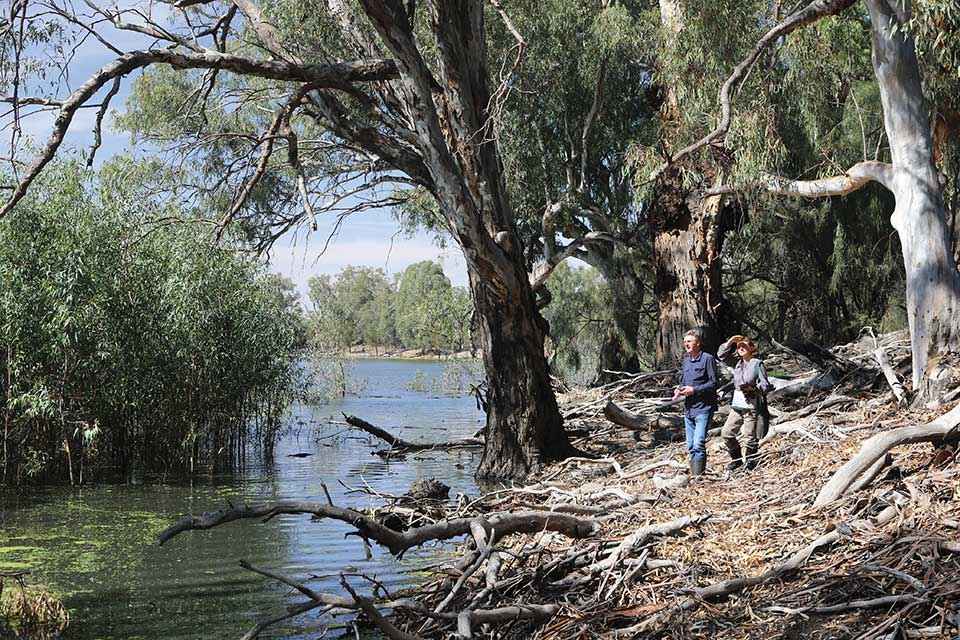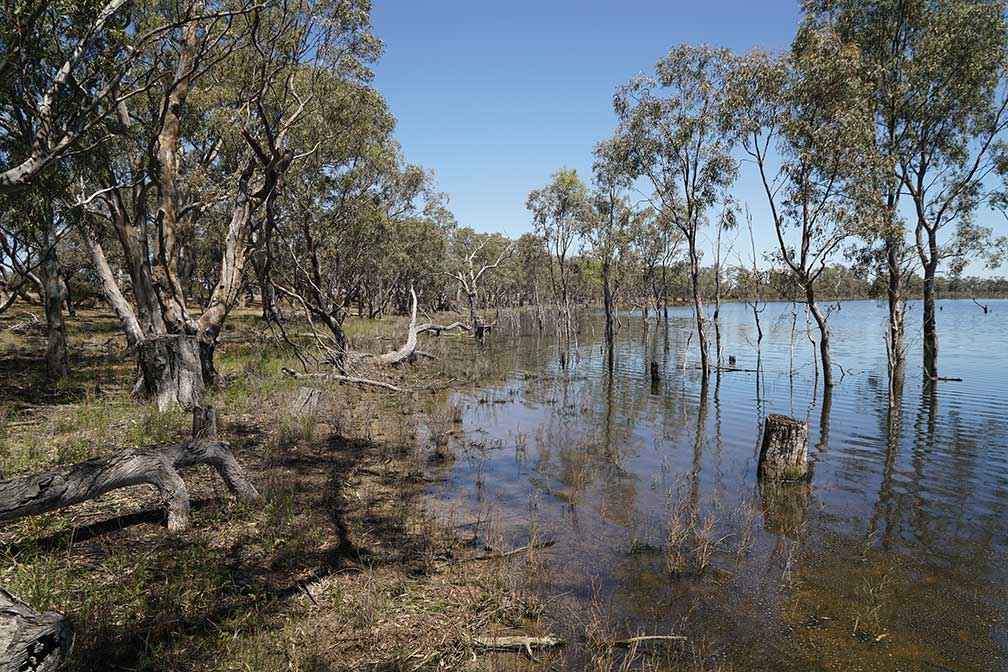Victorian Landcare Magazine - Summer 2020, Issue 77

As the weather warms up and spring rain fills the wetlands, Victoria’s frogs are getting busy, filling the bush with the sound of their mating calls. The lifecycle of most frog species has remained unchanged for millions of years.
They lay eggs in water, which hatch into tadpoles with gills, then they metamorphose and leave the water to become ground or tree dwelling animals with lungs, but still dependent on moisture. This double life is just one of the reasons frogs are so fascinating, but it’s also their Achilles heel – nearly all frogs need water in which to breed.
In the rainforests and mountain streams, water may be fairly easy to come by, but in the drying areas of southern Australia, water is harder for frogs to find. Environmental water entitlements were introduced to help balance the needs of the environment with the consumption of water by people, and a keen effort is being made to ensure that the right amount of environmental water goes to the right wetlands at the right times.
DELWP and Victoria’s CMAs are surveying wetland animals and plants to see how they respond to environmental watering events.
The Wetland Monitoring and Assessment Program (WetMAP) was set up by DELWP in 2017 to measure the response of wetland plants and animals to natural water patterns that are supplemented by environmental water.
WetMAP ecologists study tree condition, plant diversity and the numbers and breeding activity of waterbirds, fish and frogs. The authorities that manage waterways can then use this information to make informed decisions about where and when environmental water should be delivered.
To assist with data collection, citizen scientists are being recruited to help record frog calls in their local area. Volunteers capture short sound files on their mobile phones using the Australian Museum’s FrogID app. The recordings can be made at any time and place and the app provides the geographic location of the data collection.
The Frogs Are Calling You program is a collaboration between DELWP, Frogs Victoria, Australian Museum, Goulburn Broken CMA, North Central CMA and the University of Melbourne. The data will be used to inform environmental watering regimes to help benefit frogs and other wildlife.
Many research projects are now harnessing the power of citizen science, particularly in ecology and conservation, where data collection can be difficult and expensive and engagement with wildlife is an important objective. Citizen science projects are important and powerful tools to engage members of the general public in science as well as social and ecological issues.
Citizen scientists make a meaningful contribution to conservation, gain an insight into scientific research and a sense of stewardship for the natural environment – a win for all involved.
Recruiting and retaining citizen scientists is not without its challenges. The internet and social media have made reaching remote participants much easier, but some people that would make great citizen scientists will often remain elusive, regardless of efforts to engage them.

Above: Little Lake Meran in northern Victoria is a WetMAP monitoring site which receives environmental water.
Some of the historical issues that citizen science aims to address, such as public distrust of science, can hinder initial engagement. Making sure participants are informed throughout the project helps keep them enthused and engaged. For the Frogs are Calling You program scientists respond to participants through the Frog ID app with details of which frog species were calling during the recordings.
People who live outside of the target areas of northern and western Victoria are still encouraged to download the FrogID app and record frog calls. The data collected by the Australian Museum is used by many different scientific projects as well as The Frogs Are Calling You.
Lynette Plenderleith is President of Frogs Victoria and project leader of The Frogs Are Calling You.
For more information go to www.frogscalling.org or email Lynette@frogsvic.org